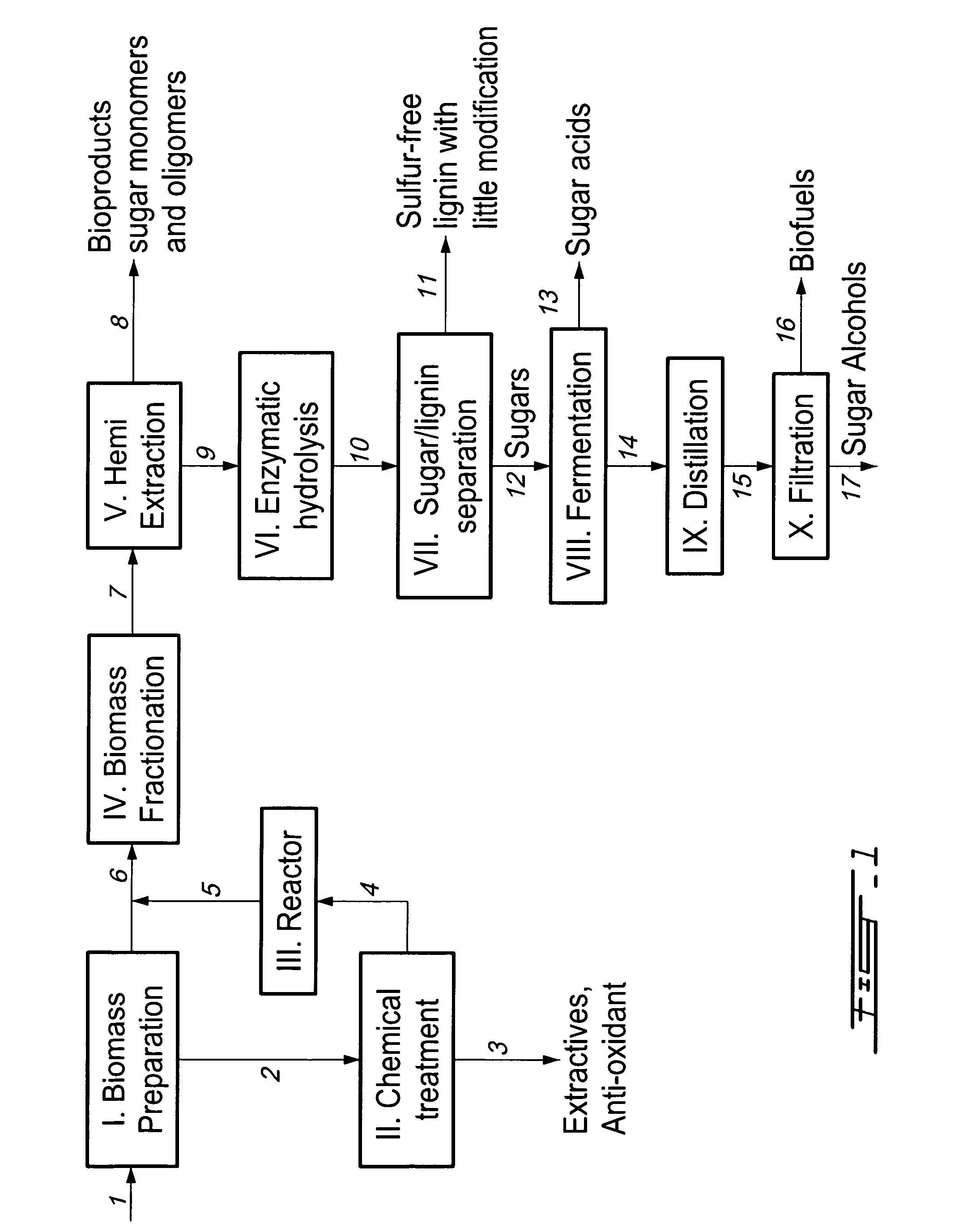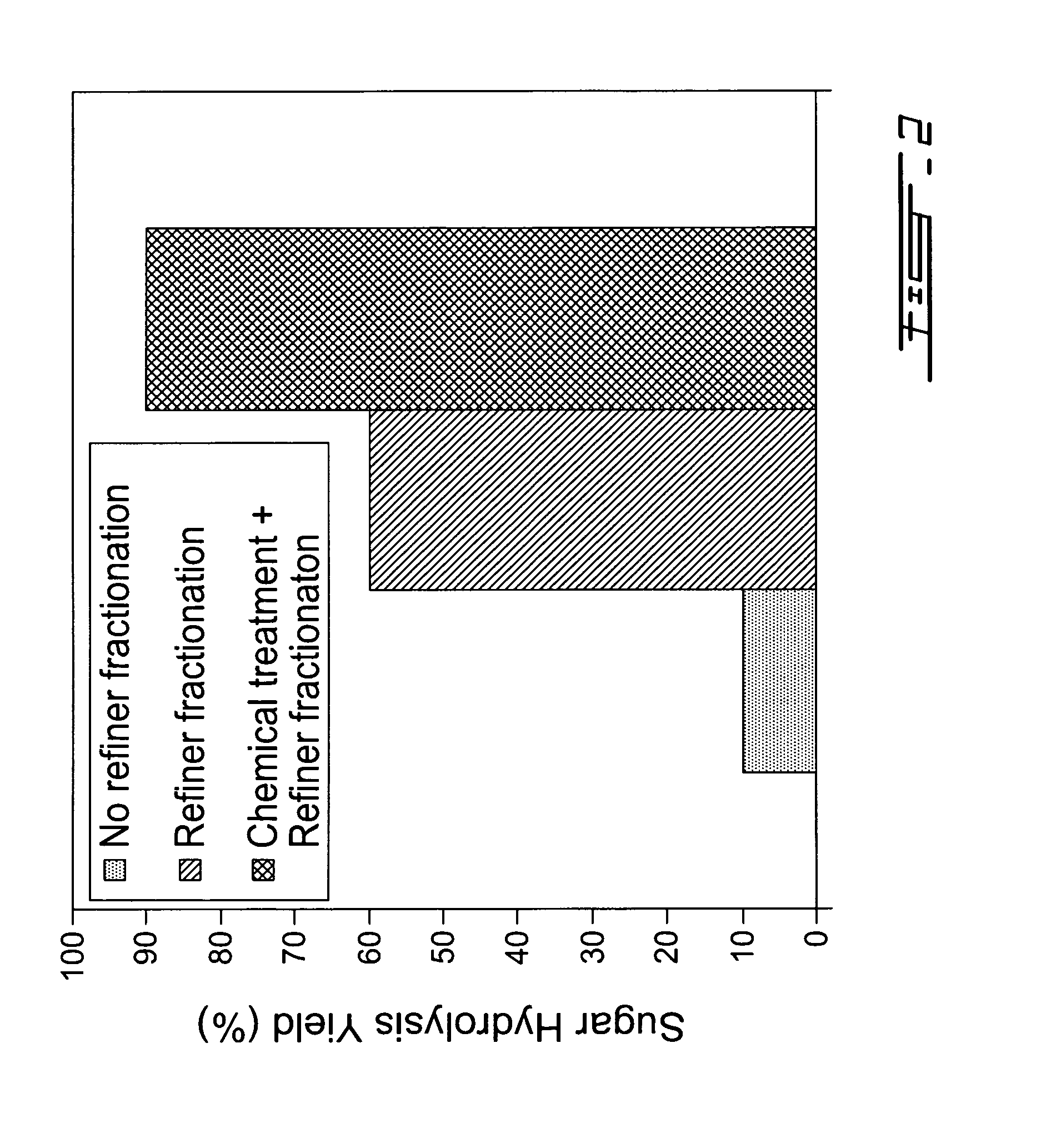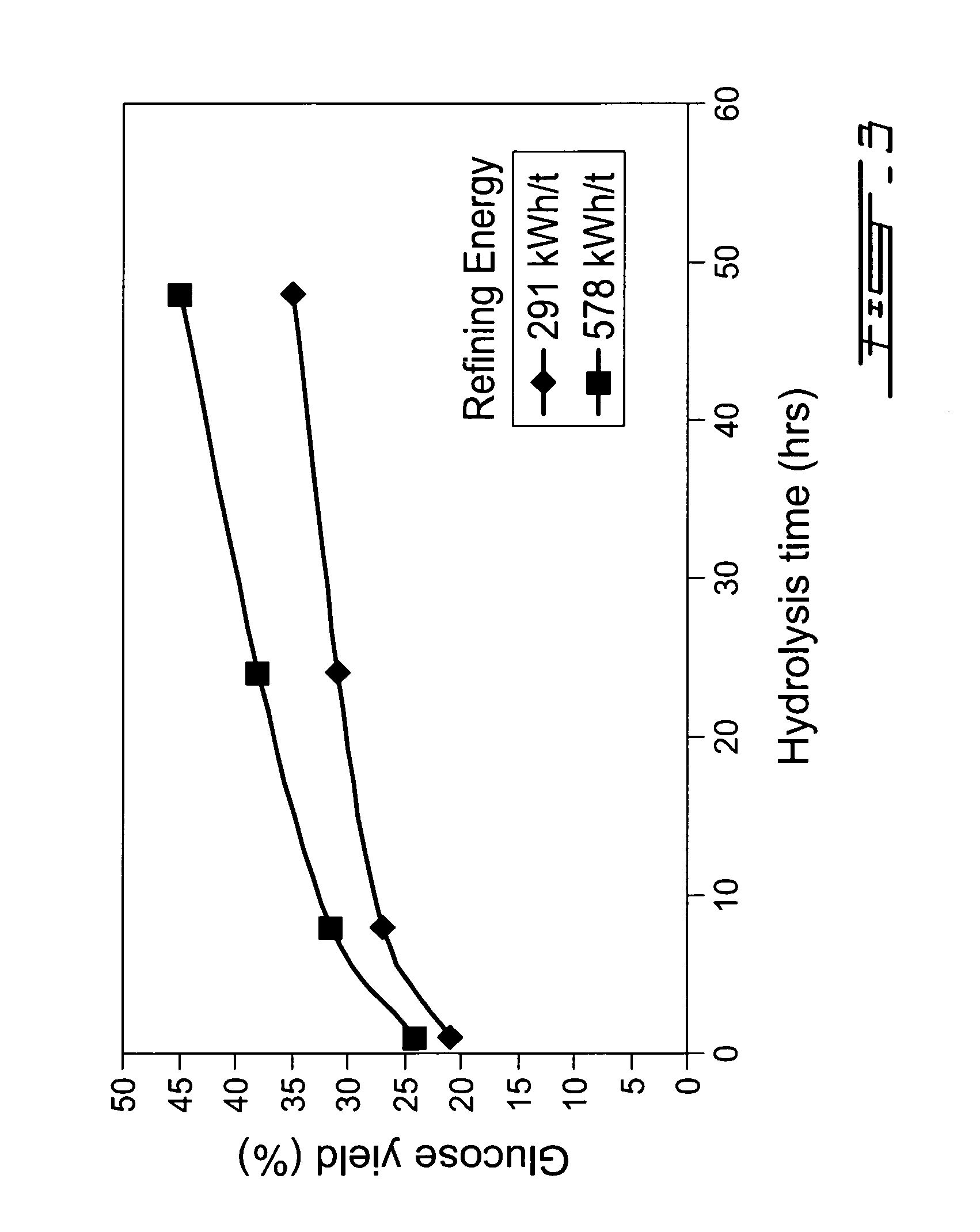Biomass fractionation process for bioproducts
a biomass and bioproduct technology, applied in the field of biomass fractionation process for bioproducts, can solve the problems of low digestible biomass, declining newsprint market, and no longer valuable paper and other problems to sustain a viable industry, and achieve the effect of high digestible biomass and easy retrofitting
- Summary
- Abstract
- Description
- Claims
- Application Information
AI Technical Summary
Benefits of technology
Problems solved by technology
Method used
Image
Examples
Embodiment Construction
[0018]The present invention relates to a novel, green fractionation and bioconversion process to convert lignocellulosic biomass to bioproducts and biofuel.
[0019]Lignocellulosic biomass in the invention refers to any type of plant biomass that is composed of cellulose, hemicellulose and lignin, typically in amounts of 30-55%, by weight, cellulose; 15-35%, by weight, hemicellulose; and 5-31%, by weight, lignin.
[0020]The present invention provides a green bioconversion process to convert lignocellulosic biomass to multiple bioproducts and biofuels by using a low-pressure refiner with minimum refining energy and few chemicals. It was unexpected that one could employ low energy refining conditions to provide effective pretreatment of lignocellulosic biomass.
[0021]The present invention provides a novel bioconversion process to convert lignocellulosic biomass to bioproducts and biofuel, which process comprises low-pressure mechanical refining, hemicellulose extraction, enzymatic hydrolysi...
PUM
| Property | Measurement | Unit |
|---|---|---|
| pressure | aaaaa | aaaaa |
| pressure | aaaaa | aaaaa |
| pressure | aaaaa | aaaaa |
Abstract
Description
Claims
Application Information
 Login to View More
Login to View More - R&D
- Intellectual Property
- Life Sciences
- Materials
- Tech Scout
- Unparalleled Data Quality
- Higher Quality Content
- 60% Fewer Hallucinations
Browse by: Latest US Patents, China's latest patents, Technical Efficacy Thesaurus, Application Domain, Technology Topic, Popular Technical Reports.
© 2025 PatSnap. All rights reserved.Legal|Privacy policy|Modern Slavery Act Transparency Statement|Sitemap|About US| Contact US: help@patsnap.com



